If you find bluetooth not showing in Device Manager, don’t worry. You’re not alone. Many users have reported this issue. You can get it back with one of the solutions in this article.
There are three solutions to fix the problem. You may not have to try them all. Just work your way down at the top of the list until you find the one that works for you.
Solution 1: Update the bluetooth driver
The Bluetooth missing problem is probably being caused by driver issues. To fix the problem, you can try to update the Bluetooth driver.
There are two ways you can update your Bluetooth driver: manually and automatically.
Way 1 — Manually: You can update your drivers manually by going to the manufacturer’s website for your devices, and searching for the most recent correct driver. Be sure to choose only drivers that are compatible with your variant of Windows versions. In this way, you will need to check the updates for your devices one by one.
Way 2 — Automatically: If you don’t have the time, patience, or computer skills to update your drivers manually, you can, instead, do it automatically with Driver Easy. Driver Easy will automatically recognize your system and find all the available correct drivers, and it will download and install them correctly:
1) Download and install Driver Easy. Then run it on your Windows.
2) Click Scan Now. All driver problems of your computer would be detected in less than 1 minute. Your Bluetooth driver is no exception.
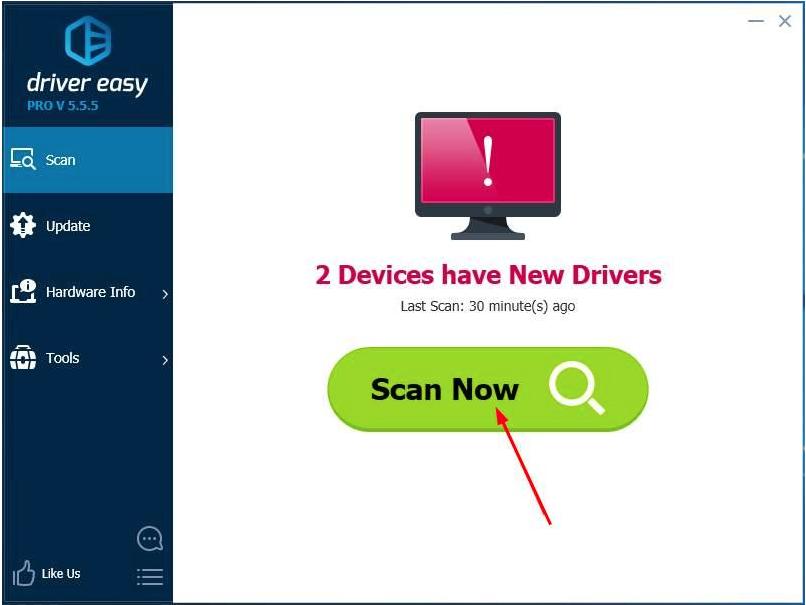
3) If you try the Free version, click Update next to your flagged Bluetooth driver to automatically download and install the correct version of this driver.
Or if you use the Pro version, click Update All to automatically download and install the correct version of all the drivers that are missing or out of date on your system. (You get full support and a 30-day money-back guarantee for the Pro version)
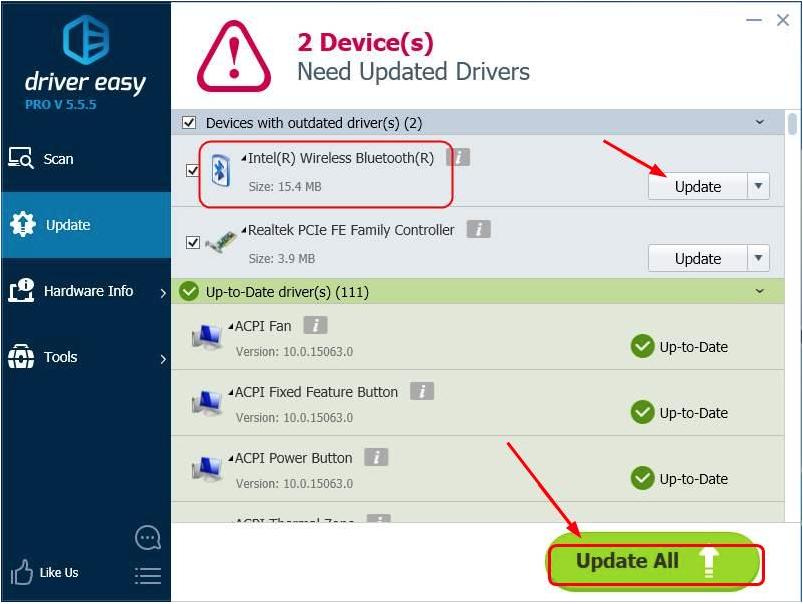
4) After updating the driver, check to see if the problem is resolved.
Solution 2: Check for the Bluetooth Support service
Bluetooth Support service supports the discovery and association of Bluetooth devices. If it’s disabled, your Bluetooth device won’t work properly due to Bluetooth missing in Device Manager. So check for the Bluetooth Support service and make sure it’s started. If it’s disabled, start it manually.
Follow these steps:
1) On your keyboard, press the Win+R (Windows key and R key) at the same time to invoke the run box.
2) Type services.msc and press Enter on your keyboard.
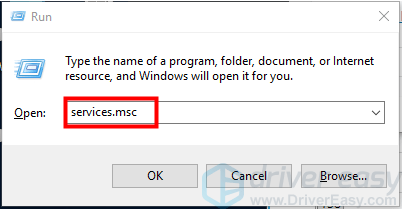
3) Double-click the Bluetooth Support Service.

4) If you see the Service status is Stopped, click the Start button and click Apply. If you see the “Service status” is “Running”, skip this step.
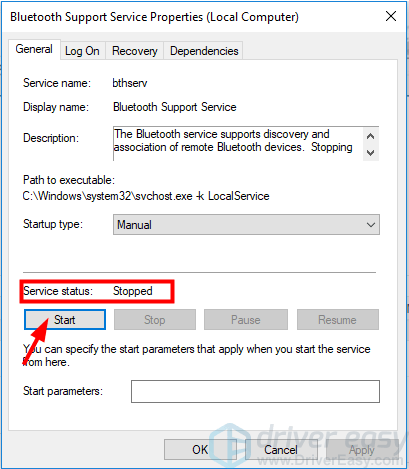
5) On the Startup type list, click Automatic then click Apply.
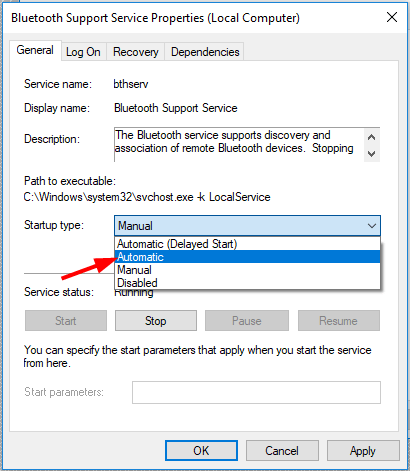
6) Check to see if the problem is resolved.
Solution 3: Run Windows Troubleshooter
To fix the problem, you can try to run Windows Hardware and Sound troubleshooter. Follow the steps below to run the troubleshooter.
1) On your keyboard, press the Windows logo + R keys simultaneously to open the Run box. Type control panel and hit Enter to open the Control Panel.
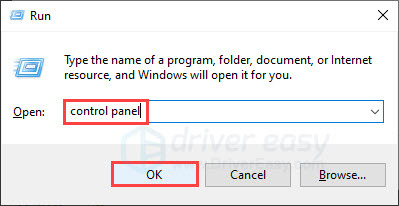
2) Click the View by Large icons and click Troubleshooting.
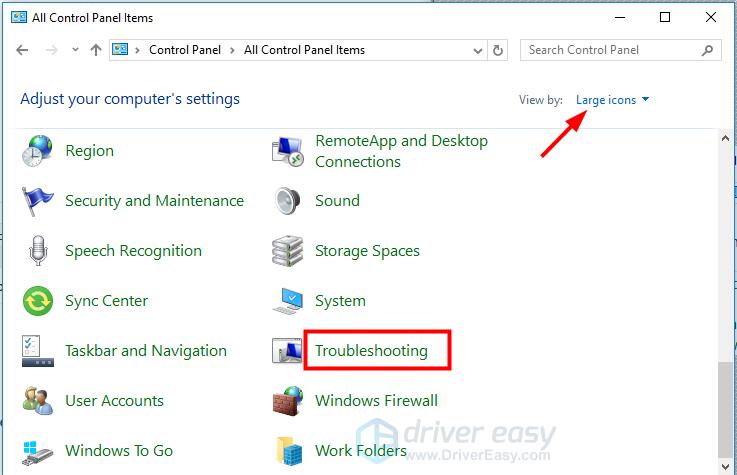
3) Click Hardware and Sound. (If you’re on Windows 11, you should click Other troubleshooters, then click on the Run button next to Bluetooth. )
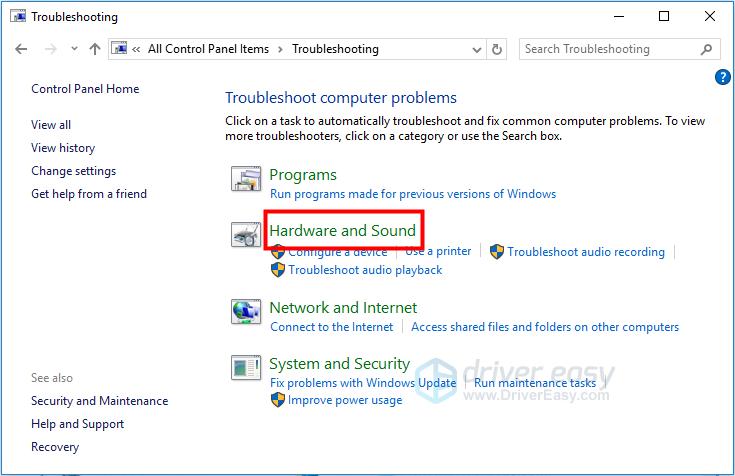
4) Scroll down and click Bluetooth.
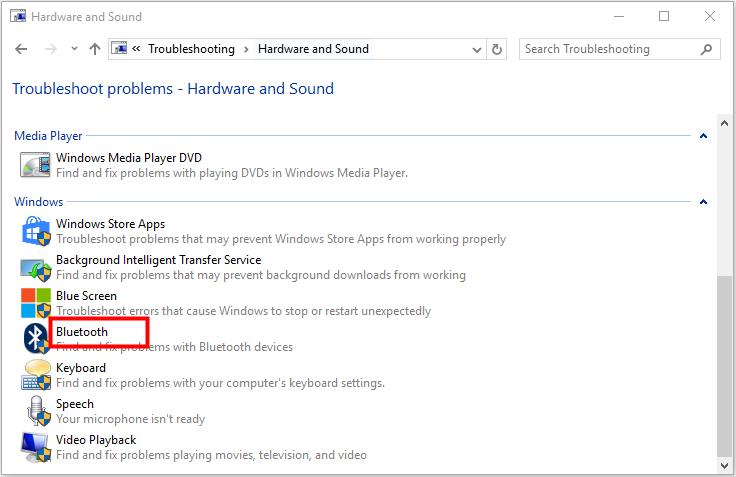
5) Click Next then the Troubleshooting will start.
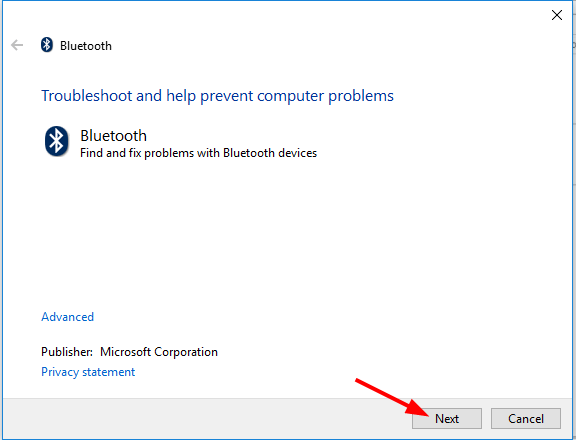
6) After the troubleshooting is completed, check to see if the problem is resolved.
Hope the methods here help you solve the Bluetooth issues. If you have any questions or ideas, please leave your comments below. We’d love to hear of any ideas and suggestions.





